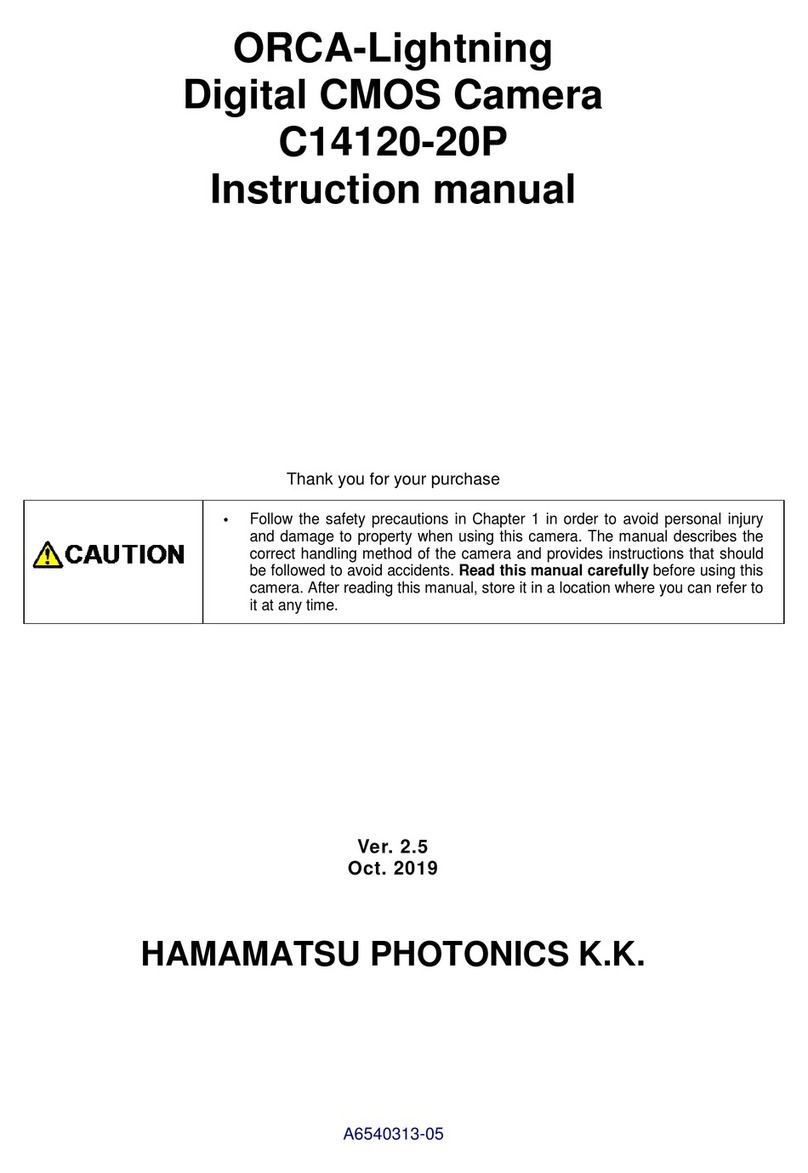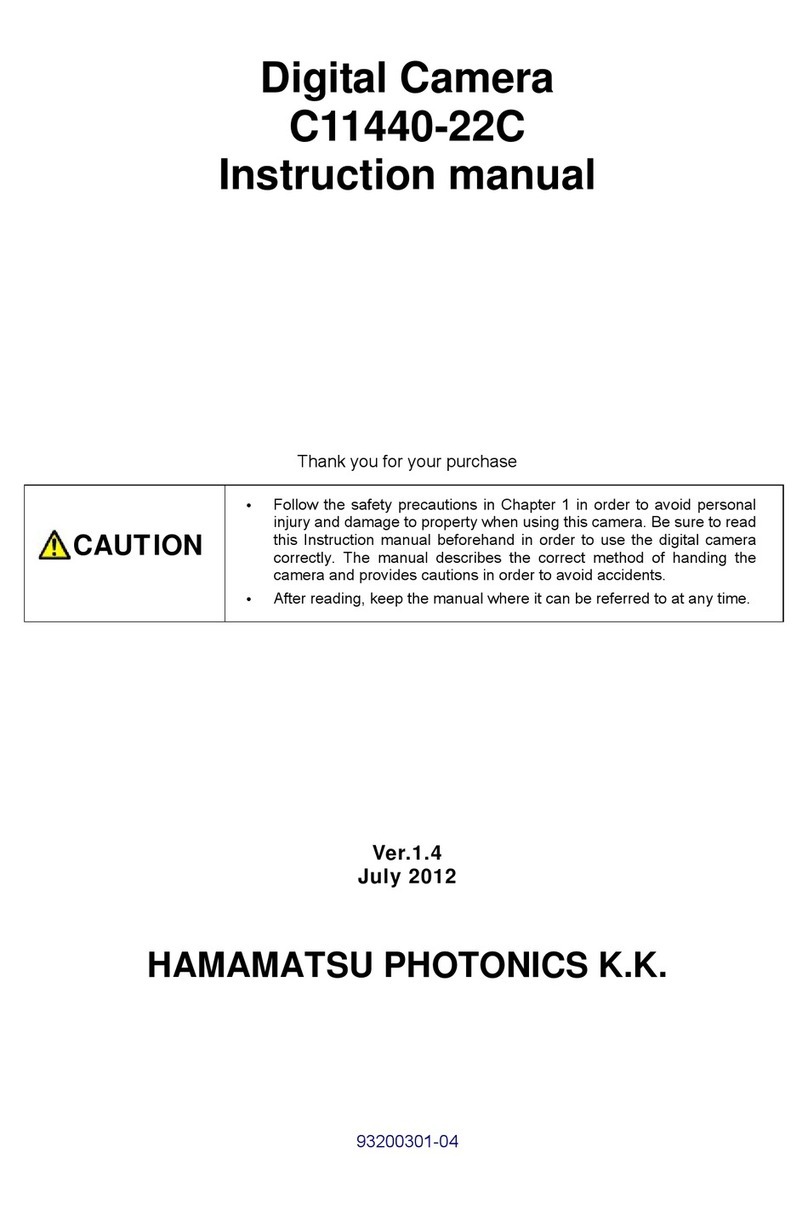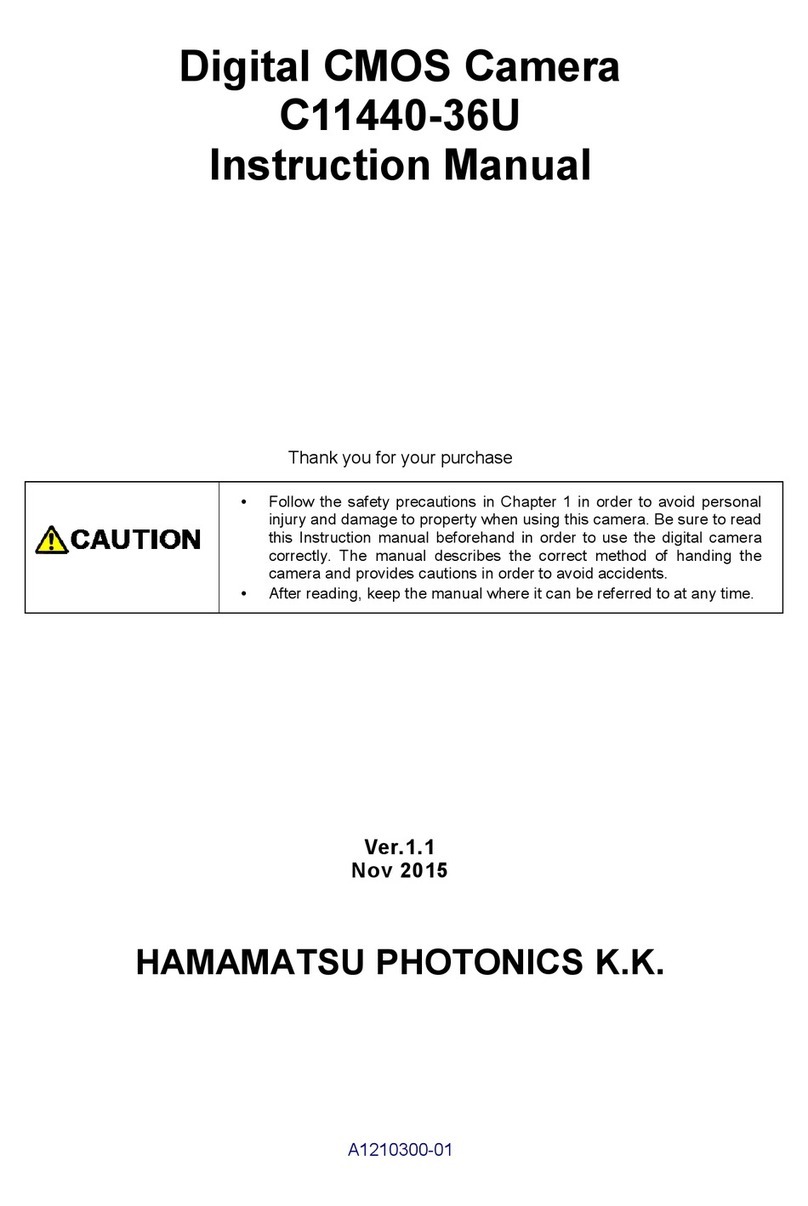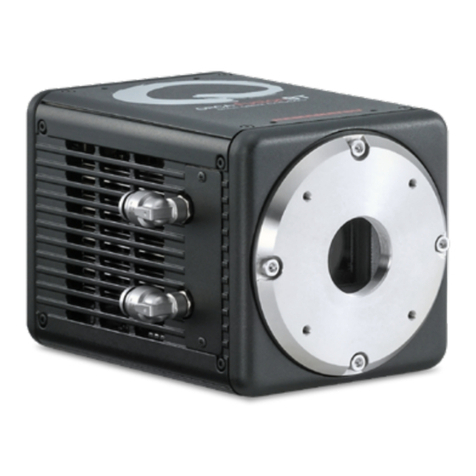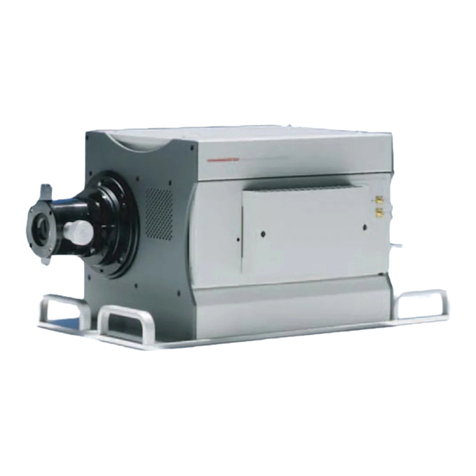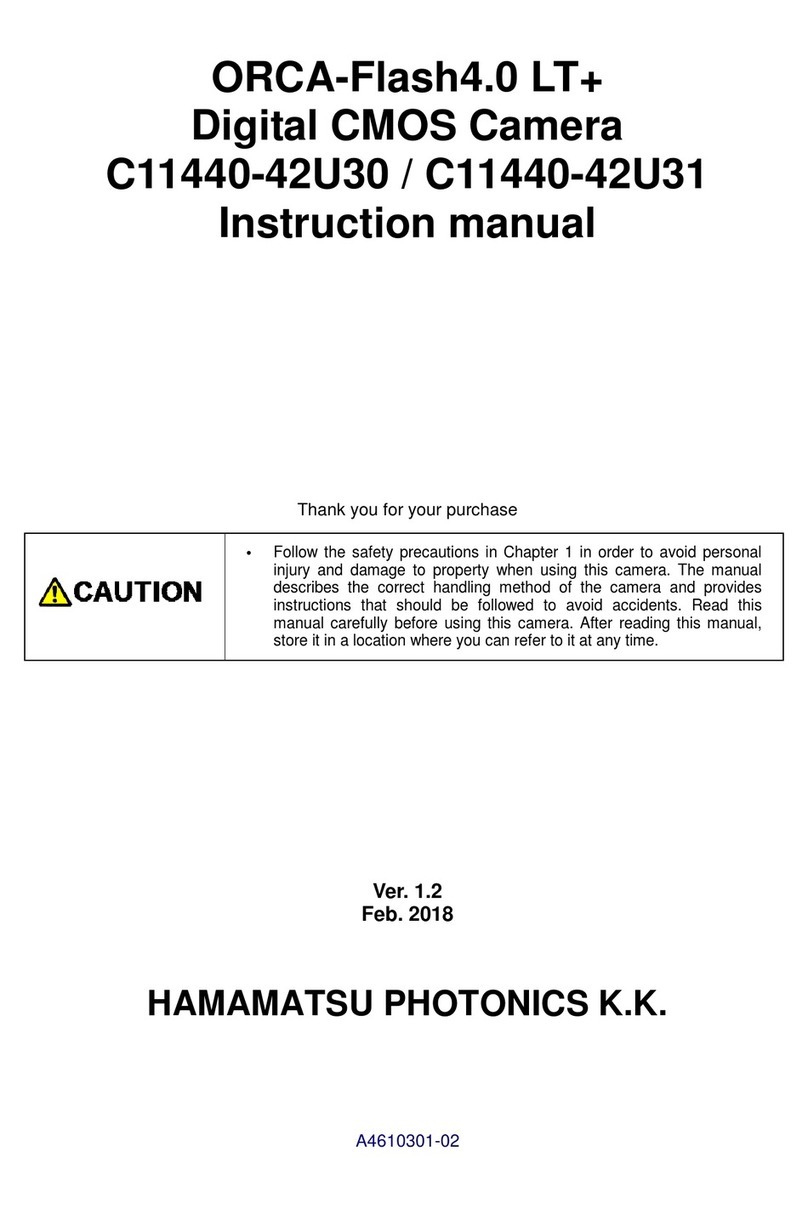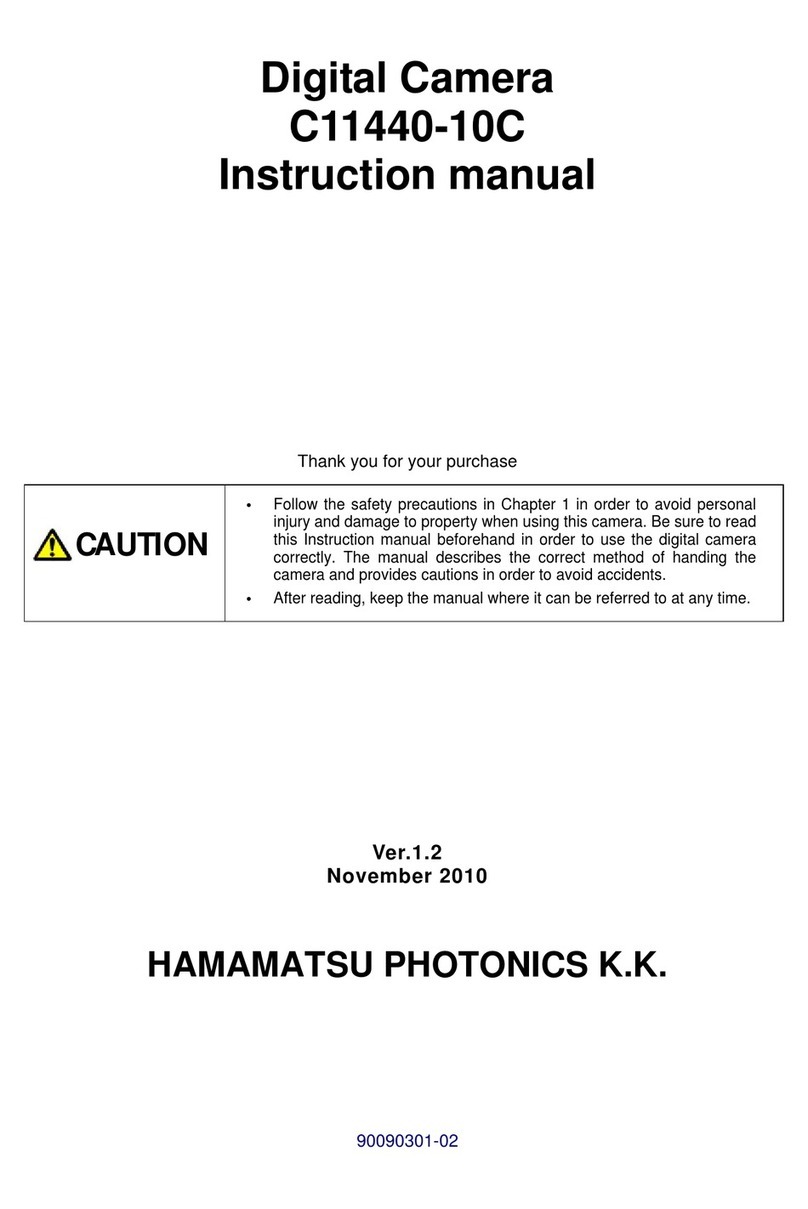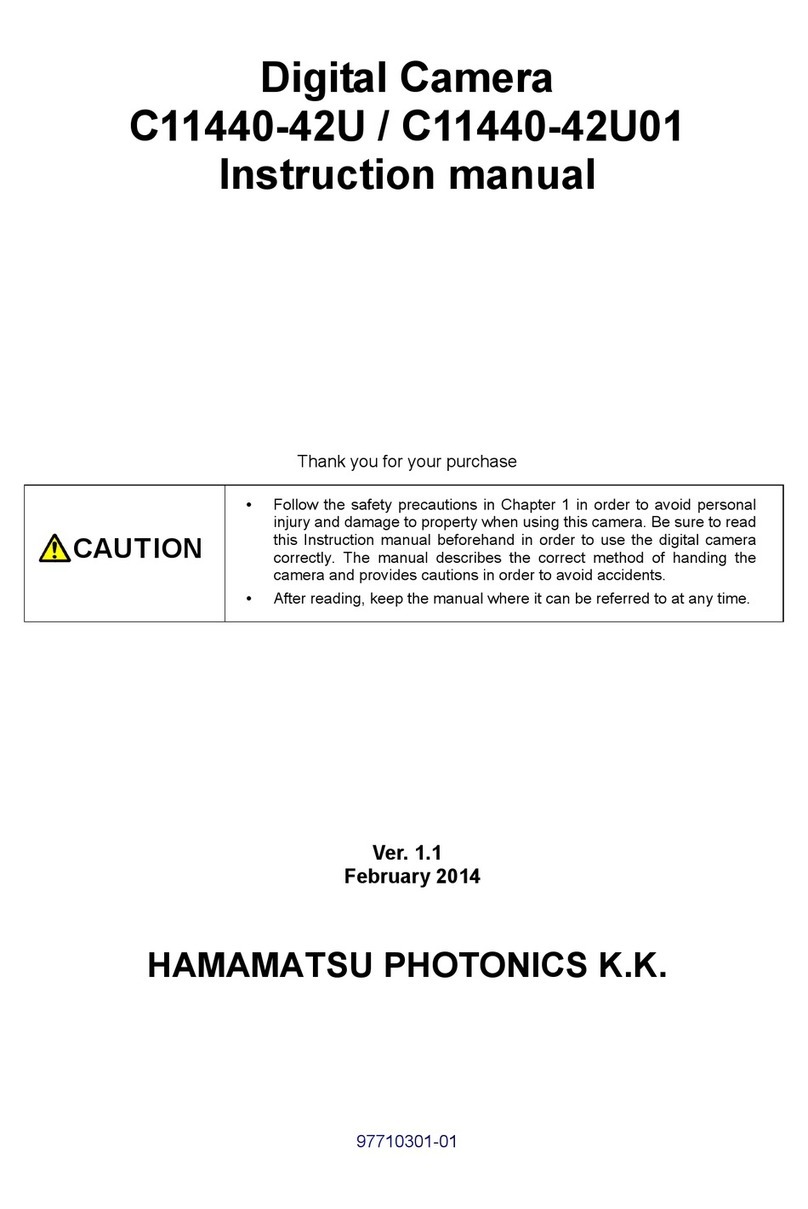
C13440-20CU / C13440-20CU01 Instruction manual_Ver.1.3
9
C
Co
on
nt
te
en
nt
ts
s
1. SAFETY PRECAUTIONS...................................................................................3
1-1 SYMBOLS...........................................................................................................................3
1-2 CLASSIFICATION OF WARNINGS ...................................................................................3
2. CHECK THE CONTENTS OF PACKAGE..........................................................7
3. INSTALLATION..................................................................................................8
4. OVERVIEW.......................................................................................................11
5. FEATURES.......................................................................................................12
6. NAME AND FUNCTION OF PARTS ................................................................15
7. CONNECTION..................................................................................................18
8. WATER COOLING ...........................................................................................20
8-1 CAUTIONS........................................................................................................................20
8-2 CONNECTION OF WATER COOLING HOSES...............................................................22
8-3 DISCONNECTION OF WATER COOLING HOSES.........................................................23
9. OPERATIONS ..................................................................................................24
9-1 OPERATING PRECAUTIONS..........................................................................................24
9-2 PREPARATING FOR IMAGING.......................................................................................25
9-3 IMAGING...........................................................................................................................25
9-4 END OF IMAGING ............................................................................................................25
9-5 STARTUP DCAM CONFIGURATOR ...............................................................................26
10. DESCRIPTION OF CMOS IMAGE SENSOR...................................................28
10-1 THEORY OF CMOS IMAGE SENSOR.............................................................................28
10-2 READOUT METHOD OF CMOS IMAGE SENSOR .........................................................29
10-3 PRECAUTION WHEN USING CMOS IMAGE SENSOR .................................................29
11. DESCRIPTION OF VARIOUS FUNCTIONS ....................................................30
11-1 NORMAL AREA MODE....................................................................................................30
11-2 LIGHTSHEET READOUT MODE.....................................................................................49
11-3 W-VIEW MODE.................................................................................................................56
11-4 DUAL LIGHTSHEET READOUT MODE..........................................................................68
11-5 REAL-TIME DEFECT PIXEL CORRECTION...................................................................74
11-6 DATA REDUCTION FUNCTIONS....................................................................................75
11-7 MASTER PULSE...............................................................................................................77
12. MAINTENANCE................................................................................................79
12-1 CARE.................................................................................................................................79
12-2 INFORMATION ON COOLING WATER FOR THE CIRCULATING WATER COOLER.80
13. TROUBLESHOOTING......................................................................................81
13-1 IMAGE IS NOT TRANSFERRED......................................................................................81
13-2 ALTHOUGH IMAGES ARE TRANSFFERED ..................................................................81
